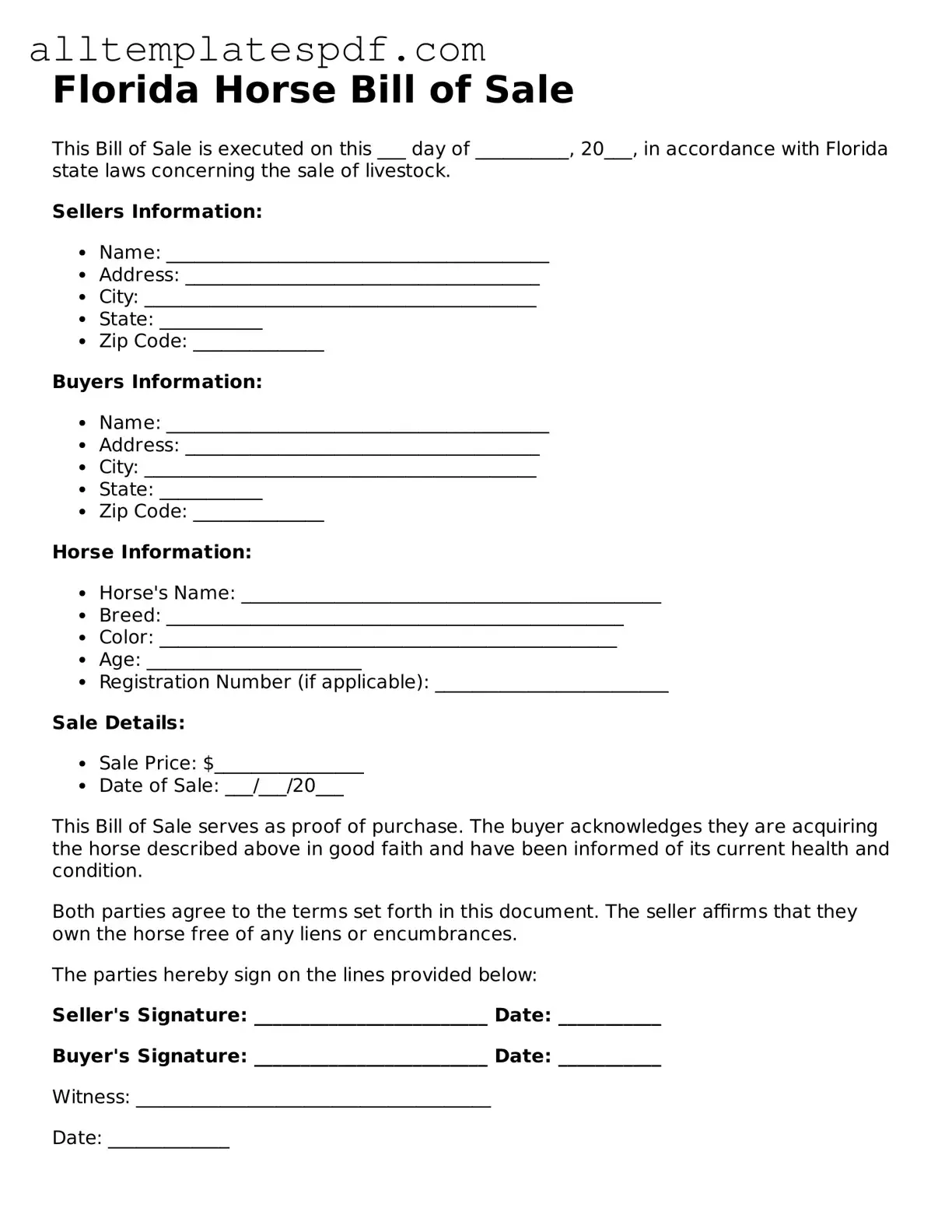Filling out the Florida Horse Bill of Sale form can seem straightforward, but many individuals make common mistakes that can lead to complications down the road. One of the most frequent errors is failing to provide complete and accurate information about the horse being sold. This includes not only the horse's name and breed but also its age, color, and any identifying markings. Omitting these details can create confusion and disputes later on.
Another mistake often made is neglecting to include the seller's and buyer's full names and contact information. It's essential to provide clear identification for both parties involved in the transaction. Without this information, it may be difficult to resolve any issues that arise after the sale.
Many people also overlook the importance of documenting the purchase price. The bill of sale should clearly state the amount paid for the horse. This serves as proof of the transaction and can be crucial if any legal disputes occur. Failing to include this detail might lead to misunderstandings about the sale.
Additionally, some individuals forget to date the bill of sale. A date is vital as it establishes when the transaction took place. Without a date, it may be challenging to prove ownership or the timeline of the sale, especially if questions arise later.
Signatures are another critical component that people often neglect. Both the seller and the buyer must sign the document for it to be legally binding. Skipping this step can render the bill of sale invalid, leaving both parties vulnerable to potential disputes.
Another common oversight is not including any warranties or guarantees regarding the horse's health or condition. If the seller is offering any assurances, these should be clearly stated in the bill of sale. This protects both the buyer and seller and can help avoid future disagreements.
Many individuals also fail to keep a copy of the completed bill of sale for their records. After the form is filled out and signed, it's essential to retain a copy for personal reference. This document serves as proof of the transaction and can be invaluable in the event of any future issues.
Finally, some people mistakenly believe that a verbal agreement is sufficient. However, having a written bill of sale is critical for legal protection. A written document provides clarity and can be used as evidence in case of disputes. Don’t underestimate the power of putting things in writing!
